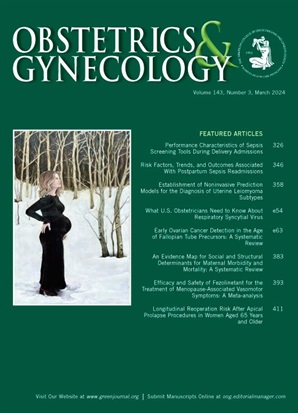Handheld Point-of-Care Ultrasonography for Gynecology: Insights Into Space Travel Through Parabolic Flight.
IF 4.7
2区 医学
Q1 OBSTETRICS & GYNECOLOGY
引用次数: 0
Abstract
BACKGROUND Imaging plays a critical role in evaluating gynecologic emergencies. However, access to such technology is limited in austere environments such as spaceflight. Portable point-of-care ultrasonography (POCUS) offers rapid diagnostic capabilities potentially useful for supporting women's health. However, the feasibility of using portable POCUS for gynecological imaging in spaceflights characterized by shifts in weightlessness has not been previously evaluated. INSTRUMENT Transabdominal ultrasonography was undertaken to assess the feasibility of using portable POCUS for gynecologic scans during a parabolic flight. EXPERIENCE Despite rapidly alternating gravitational changes and the close proximity of other crew members, a participant successfully obtained clear diagnostic images of the uterus and measured three-dimensional bladder volumes during a parabolic flight aboard a Falcon 20 aircraft without privacy concerns. During the hypergravity phase (approximately 2 G) of the flight, heavier upper-extremity movement and probe positioning created challenges to successful imaging. However, minimizing head movement helped to stabilize the vestibular system during gravity changes, successfully mitigating symptoms such as vertigo, nausea, and dizziness. This strategy facilitated smoother transitions between gravitational forces and enabled the participant to obtain uterine imaging during the microgravity phase of the flight. CONCLUSION The use of a handheld portable POCUS device is feasible during parabolic flight, establishing an important precedent useful for supporting women's health in space. Future technology needs to incorporate training models, augmented reality, and advanced artificial intelligence-based tools to direct self-scanning capabilities for participants who do not have medical experience.手持点护理超声检查妇科:洞察太空旅行通过抛物线飞行。
背景影像学在妇科急诊评估中起着至关重要的作用。然而,在太空飞行等严峻环境中,获得这种技术的机会是有限的。便携式即时超声(POCUS)提供了快速诊断能力,可能有助于支持妇女的健康。然而,在以失重变化为特征的航天飞行中使用便携式POCUS进行妇科成像的可行性此前尚未得到评估。仪器:采用经腹超声检查来评估在抛物线飞行中使用便携式POCUS进行妇科扫描的可行性。在猎鹰20飞机的抛物线飞行中,尽管重力变化快速交替,而且其他机组成员距离很近,但一名参与者在没有隐私问题的情况下,成功获得了子宫的清晰诊断图像,并测量了三维膀胱体积。在飞行的超重力阶段(大约2g),更重的上肢运动和探头定位给成功成像带来了挑战。然而,减少头部运动有助于在重力变化时稳定前庭系统,成功减轻眩晕、恶心和头晕等症状。这一策略促进了引力之间的平稳过渡,并使参与者能够在飞行的微重力阶段获得子宫成像。结论在抛物飞行中使用手持式便携式POCUS装置是可行的,为支持妇女在太空中的健康奠定了重要的先例。未来的技术需要结合培训模型、增强现实和先进的基于人工智能的工具,为没有医疗经验的参与者提供自我扫描功能。
本文章由计算机程序翻译,如有差异,请以英文原文为准。
求助全文
约1分钟内获得全文
求助全文
来源期刊

Obstetrics and gynecology
医学-妇产科学
CiteScore
11.10
自引率
4.20%
发文量
867
审稿时长
1 months
期刊介绍:
"Obstetrics & Gynecology," affectionately known as "The Green Journal," is the official publication of the American College of Obstetricians and Gynecologists (ACOG). Since its inception in 1953, the journal has been dedicated to advancing the clinical practice of obstetrics and gynecology, as well as related fields. The journal's mission is to promote excellence in these areas by publishing a diverse range of articles that cover translational and clinical topics.
"Obstetrics & Gynecology" provides a platform for the dissemination of evidence-based research, clinical guidelines, and expert opinions that are essential for the continuous improvement of women's health care. The journal's content is designed to inform and educate obstetricians, gynecologists, and other healthcare professionals, ensuring that they stay abreast of the latest developments and best practices in their field.
 求助内容:
求助内容: 应助结果提醒方式:
应助结果提醒方式:


